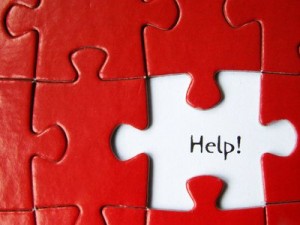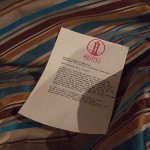 I learned something new last week and it took the ***!#### means test to teach it to me.
I learned something new last week and it took the ***!#### means test to teach it to me.
The case involved a couple where the non filing wife ran an interior decorating business. The income and expense information we were presented with showed “lots” of money flowing through the business.
Subtract the given business expenses and our figures said these folks should be paying several thousands of dollars a month.
Yet the oral narrative said they were driving old cars, the house needed maintenance (click to investigate to find out the best services), and they hoped for a total payment in the $500 range.
The problem
We got the bookkeeper prepared income and expense statements. My partner and I sat together huddled over tax returns and a calculator to try to find the disconnect. Something was missing. Why did the numbers show gobs of money, and the clients cry poor?
It wasn’t until I dragged both of them in to go over what we had that I learned something new: the sales taxes didn’t appear on an income and expense statement.
Bingo! Evidently, in bookkeeper-speak , taxes aren’t a business expense. They get paid, and these clients were paying them, but the standard accounting form didn’t show them. Subtract the sales tax, and the means test worked.
And as I talked to them, I learned the freight charges paid on the goods the decorator ordered weren’t on the expense statement either. This just shows how important accounting and bookkeeping solutions like the ones offered at https://www.fourlane.com/quickbooks-consulting/ are in managing business finances and avoiding any accounting issues.
The lesson
So, the narrow take-away is that some taxes don’t appear on Quickbooks income and expense statements.
The broader lesson though is the need to keep digging til you’re convinced you have the numbers right.
Sometimes what you see is the reverse of my problem: lifestyle that is inconsistent with the money flowing through the bank. You have to ask if the client is helping themselves to cash from the till or whether the business is paying some of the personal expenses.
I love business cases and business people. Add a facility with small business to your skill set and the world of clients who need you expands. But keep asking questions til you get the answers that make sense and fill the gaps.
Image: Gorilla-Fotolia.com








Yes, as both a CPA and an attorney I was already well aware of this issue. I would also like to point out that the problem exists in both directions. You find expenses that are not included in the P&L and should be on the B22, and you find expenses that are included in the P&L and don’t belong on the means test. The UST’s position (right or wrong) is that depreciation doesn’t belong on the means test as a reduction of business or rental property income. You also find often find on P&Ls interest expense for the business portion of debts such as from personal credit card debts or home equity lines of credit.
You also find clients who will run many of their personal expenses through a business P & L. For example, vehicle operating expenses, telephone, part of household rent are often included as business expense items and then the clients are wanting to deduct them again if you ask them to prepare a personal budget.
In totality a P & L for a clients business is no more than a starting point. You will also need the client’s ledger, purchases journal, cash disbursement journal, etc.
And if you take the position that business expenses on the means test are forward looking, like all other expenses, you need to factor out the debt service they won’t be making on credit cards, and figure out what it was they were buying on cards, so you get that expense included.
What’s the Chinese curse: may you live in “interesting” times?
Aren’t the sales taxes collected as a trust tax and not included in income for a company?
No, in California, they are a tax on the retailer, not on the buyer.